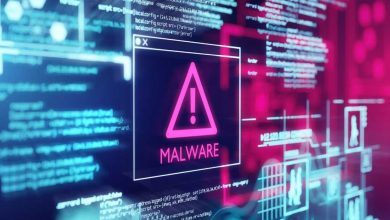Here are the top 3 causes of breaches – and how to mitigate them

The stakes are higher than ever for organizations worldwide regarding cybersecurity incidents, as the fallout of such incidents is becoming more costly and complex. According to the Fortinet 2024 Cybersecurity Skills Gap Report, the overwhelming majority (87%) of those surveyed said they experienced one or more breaches in the last 12 months that they could attribute to the cyber skills shortage. At the same time, malware, phishing, and web attacks combined accounted for 80% of all attacks over the last year.
The amount of resources needed to mitigate an incident is increasing as well, with 63% saying it took longer than a month to recover from a cyberattack. More than 50% (up from 48% in 2023) indicate that breaches cost their organization over $1 million in lost revenue, fines, or other expenses.
There is rarely a single point of failure to which teams can attribute a breach, but common factors contribute to gaps in risk management efforts and, in turn, cyber incidents. For those tasked with defending their organization from cybercriminals, it’s worth examining these factors and understanding how to mitigate these challenges successfully.
The top causes of cyber incidents
Leaders indicate that the top three causes of breaches are:
- IT or security staff that lacks the necessary skills and training (58%)
- Lack of organizational or employee security awareness (56%)
- Lack of cybersecurity products (54%)
Of those businesses that fell victim to a cyberattack, it’s encouraging to see that these incidents are motivating leaders to make changes inside their organizations. Such actions include expanding their IT or security team (65%), mandating cybersecurity training for IT and security personnel (62%), introducing company-wide security awareness training (61%), purchasing new security solutions (59%), and hiring security consultants (43%).
Many security and IT leaders face similar hurdles when it comes to preventing breaches. The good news is that businesses can take many steps to ease these common challenges related to staffing, employee awareness, and technology.
Find and develop cybersecurity talent
The ongoing cybersecurity talent shortage continues to negatively impact security and IT teams. According to this year’s report, 70% of respondents agree that the cybersecurity skills shortage creates new risks for their organizations. More than half say they struggle to identify, hire, and retain talent. Leaders also say they have trouble finding candidates with specific experience in network engineering and security, with 51% saying the talent pool for these skill sets is lean.
As these challenges persist, organizations need to take new approaches to finding and cultivating security talent. Offering training opportunities for existing security professionals, recruiting talent from untapped communities, and partnering with higher education institutions and nonprofit organizations are all viable avenues to shrinking the skills gap and filling vital cybersecurity positions.
Organizations could potentially find it easier to identify and hire diverse employees if they change certain prerequisites. Seventy-one percent of respondents say they require four-year degrees instead of considering candidates with non-traditional backgrounds like boot camps and professional certifications. If organizations changed their minimum requirements, this pivot—combined with embracing apprenticeships or train-to-hire programs, which 80% of respondents already offer—can help expand the talent pool.
Implement cybersecurity awareness training
Many of the most frequently used attack types directly target individual users, underscoring the importance of all employees having basic cybersecurity knowledge. When empowered with the necessary insights to spot and halt an attack, employees can be a solid first line of defense against adversaries.
According to a Fortinet global research brief, 85% of organizations currently have a security awareness and training program. Nearly three-quarters of those that don’t indicate they are looking to implement one. Security awareness and training initiatives can take many forms, but all should cover basic cybersecurity knowledge—phishing, ransomware, social media use, mobile device use, social engineering, and more—and allow the business to customize the content to meet their unique needs.
Procure the right technology solutions
Security analysts—and your employees—need the right tools and skill sets to combat threats and stay ahead of today’s attacks. It is crucial to round out skills, knowledge, and certifications with advanced technologies.
As more boards of directors (97%) prioritize cybersecurity, security and IT leaders likely have more opportunities to obtain the resources they need to protect the organization’s assets. As they evaluate and adopt new technologies, many teams are taking a platform approach to cybersecurity. This philosophy offers security and IT practitioners numerous benefits, like decreasing reliance on point solutions, reducing overhead, and enabling native automation across multiple products.
Breach prevention demands a multi-faceted approach
As breaches continue to substantially impact organizations across all industries, leaders must balance hiring skilled professionals, prioritizing company-wide security awareness training efforts, and procuring technology solutions.
Better trained, more knowledgeable, and highly skilled security and IT professionals are essential to preventing cyberattacks, and organizations need to explore more creative strategies for recruiting and retaining talent. For example, businesses should set diversity hiring goals and embrace public-private collaborations designed to give individuals of all backgrounds and skill levels access to cybersecurity education and training. These professionals also need the right tools to safeguard the business from breaches. Finally, don’t forget about employees’ crucial role in fighting cybercrime.
By taking a multi-pronged approach to cybersecurity, security and IT practitioners have the best chances of staying one step ahead of adversaries and effectively defending their organization’s critical assets.



